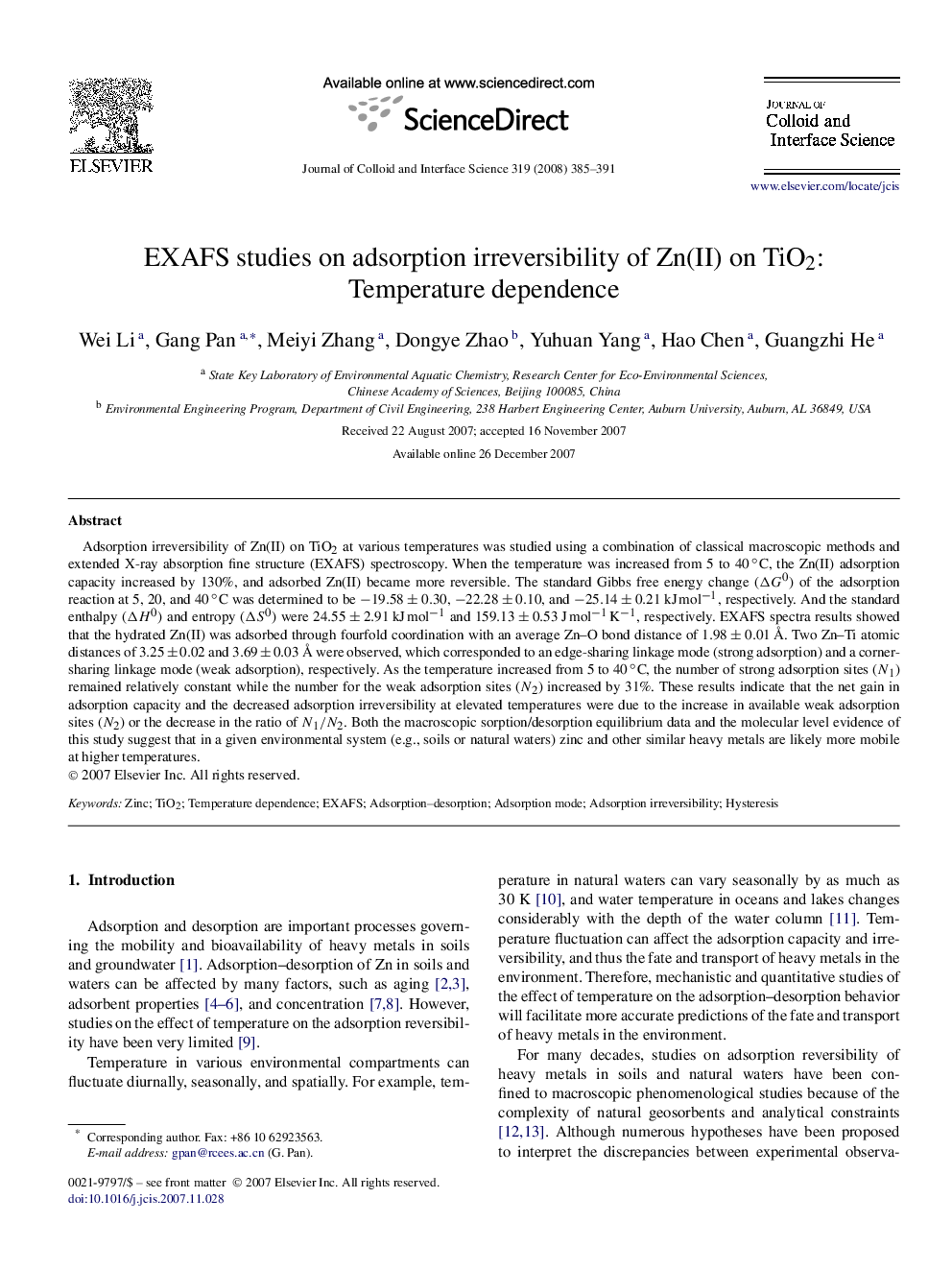| Article ID | Journal | Published Year | Pages | File Type |
|---|---|---|---|---|
| 611537 | Journal of Colloid and Interface Science | 2008 | 7 Pages |
Adsorption irreversibility of Zn(II) on TiO2 at various temperatures was studied using a combination of classical macroscopic methods and extended X-ray absorption fine structure (EXAFS) spectroscopy. When the temperature was increased from 5 to 40 °C, the Zn(II) adsorption capacity increased by 130%, and adsorbed Zn(II) became more reversible. The standard Gibbs free energy change (ΔG0ΔG0) of the adsorption reaction at 5, 20, and 40 °C was determined to be −19.58±0.30−19.58±0.30, −22.28±0.10−22.28±0.10, and −25.14±0.21 kJmol−1, respectively. And the standard enthalpy (ΔH0ΔH0) and entropy (ΔS0ΔS0) were 24.55±2.91 kJmol−1 and 159.13±0.53 Jmol−1K−1, respectively. EXAFS spectra results showed that the hydrated Zn(II) was adsorbed through fourfold coordination with an average ZnO bond distance of 1.98±0.01 Å1.98±0.01 Å. Two ZnTi atomic distances of 3.25±0.023.25±0.02 and 3.69±0.03 Å3.69±0.03 Å were observed, which corresponded to an edge-sharing linkage mode (strong adsorption) and a corner-sharing linkage mode (weak adsorption), respectively. As the temperature increased from 5 to 40 °C, the number of strong adsorption sites (N1N1) remained relatively constant while the number for the weak adsorption sites (N2N2) increased by 31%. These results indicate that the net gain in adsorption capacity and the decreased adsorption irreversibility at elevated temperatures were due to the increase in available weak adsorption sites (N2N2) or the decrease in the ratio of N1/N2N1/N2. Both the macroscopic sorption/desorption equilibrium data and the molecular level evidence of this study suggest that in a given environmental system (e.g., soils or natural waters) zinc and other similar heavy metals are likely more mobile at higher temperatures.
Graphical abstractZn(II) was adsorbed onto TiO2 as the tetrahedral structure with two linkage modes: corner-sharing (weak adsorption) and edge-sharing (strong adsorption). The increased number of weak adsorption sites was responsible for the increased adsorption capacity and reversibility as temperature increased.Figure optionsDownload full-size imageDownload as PowerPoint slide
